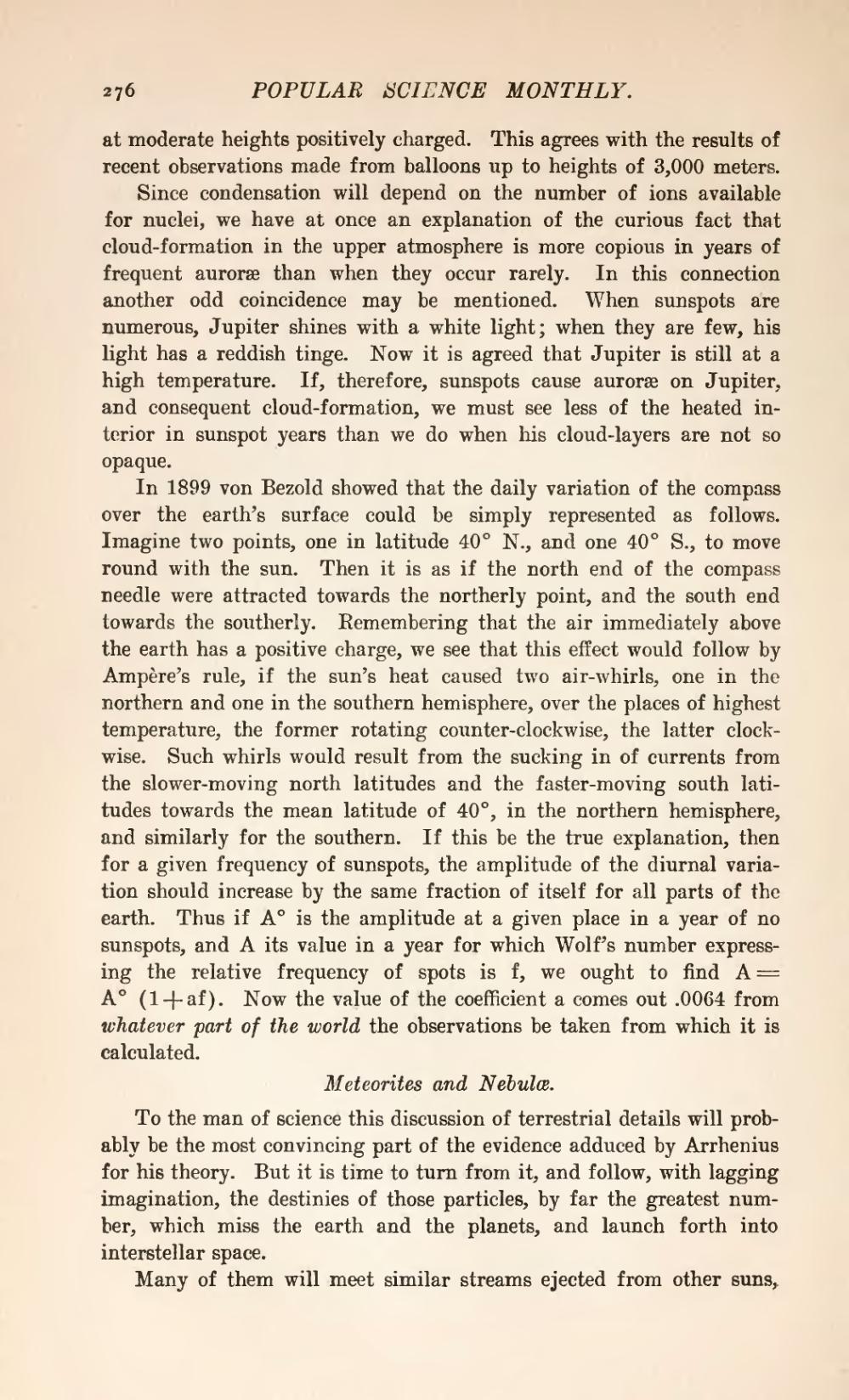at moderate heights positively charged. This agrees with the results of recent observations made from balloons up to heights of 3,000 meters.
Since condensation will depend on the number of ions available for nuclei, we have at once an explanation of the curious fact that cloud-formation in the upper atmosphere is more copious in years of frequent auroræ than when they occur rarely. In this connection another odd coincidence may be mentioned. When sunspots are numerous, Jupiter shines with a white light; when they are few, his light has a reddish tinge. Now it is agreed that Jupiter is still at a high temperature. If, therefore, sunspots cause auroræ on Jupiter, and consequent cloud-formation, we must see less of the heated interior in sunspot years than we do when his cloud-layers are not so opaque.
In 1899 von Bezold showed that the daily variation of the compass over the earth's surface could be simply represented as follows. Imagine two points, one in latitude 40° N., and one 40° S., to move round with the sun. Then it is as if the north end of the compass needle were attracted towards the northerly point, and the south end towards the southerly. Remembering that the air immediately above the earth has a positive charge, we see that this effect would follow by Ampère's rule, if the sun's heat caused two air-whirls, one in the northern and one in the southern hemisphere, over the places of highest temperature, the former rotating counter-clockwise, the latter clock-wise. Such whirls would result from the sucking in of currents from the slower-moving north latitudes and the faster-moving south latitudes towards the mean latitude of 40°, in the northern hemisphere, and similarly for the southern. If this be the true explanation, then for a given frequency of sunspots, the amplitude of the diurnal variation should increase by the same fraction of itself for all parts of the earth. Thus if A° is the amplitude at a given place in a year of no sunspots, and A its value in a year for which Wolf's number expressing the relative frequency of spots is f, we ought to find A A° (1af). Now the value of the coefficient a comes out.0064 from whatever part of the world the observations be taken from which it is calculated.
Meteorites and Nebulæ.
To the man of science this discussion of terrestrial details will probably be the most convincing part of the evidence adduced by Arrhenius for his theory. But it is time to turn from it, and follow, with lagging imagination, the destinies of those particles, by far the greatest number, which miss the earth and the planets, and launch forth into interstellar space.
Many of them will meet similar streams ejected from other suns.


